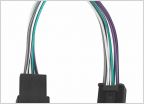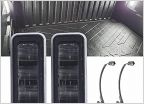-
Welcome to Tacoma World!
You are currently viewing as a guest! To get full-access, you need to register for a FREE account.
As a registered member, you’ll be able to:- Participate in all Tacoma discussion topics
- Communicate privately with other Tacoma owners from around the world
- Post your own photos in our Members Gallery
- Access all special features of the site
What battery is in your 2017 TRD Off Road w/Factory Tow Package?
Discussion in '3rd Gen. Tacomas (2016-2023)' started by Zoop, Feb 7, 2017.
Page 3 of 4
Page 3 of 4


 Kicker Key Amp and Red Wolf Harness
Kicker Key Amp and Red Wolf Harness Best edge trim
Best edge trim Will these truck bed lights fit?
Will these truck bed lights fit? Help Tekonsha P3 issue
Help Tekonsha P3 issue Trd Pro wheel swap on my Sport
Trd Pro wheel swap on my Sport Brand of engine oil
Brand of engine oil














































































